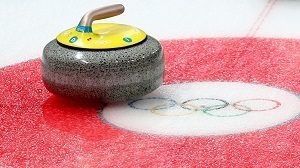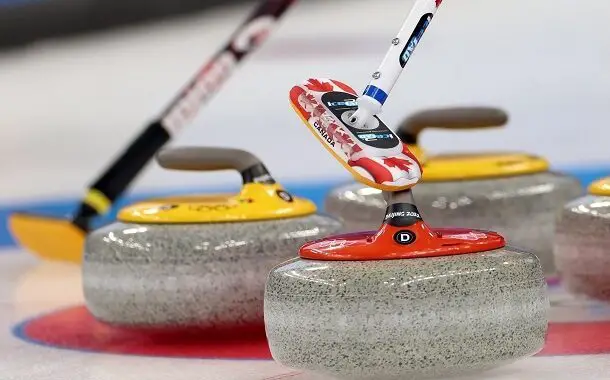Curling Stone Cost
Last Updated on May 13, 2022
Written by CPA Alec Pow | Content Reviewed by ![]() CFA Alexander Popinker
CFA Alexander Popinker
The date on which this sport appeared is unknown, but it is believed to have been practiced for at least 500 years. A curling stone (“Stirling Stone”) was found with the year 1511 engraved on it. It was found in Scotland, the country where this game is believed to have come to life. The first curling club was founded in 1716 in Stirlingshire. Members told him Curlers of Kilsit. It took more than 100 years for the rules of the game and the equipment used to be standardized, and after 1960, clubs also appeared in the USA, France, Switzerland, and Germany. But how much would a curling stone cost?
How much does a Curling stone cost?
There is a monopoly on the market for this item; you can find only a few shops in Scotland and the main buyer is Canada. The cost of a curling stone is anywhere between $500 and $750, depending on the size and weight.
How much does a curling stone set cost?
You might also like our articles on the price of Bowling ball drilling, Golf balls, and Hockey equipment.
Curling stones weigh about 42 pounds. There are two sets of eight stones for each team, of different colors. They are made of solid granite. They have an angled handle at the top.
Expect to pay anywhere between $8,500 and $12,500 for a curling stone set. This cost range is available for the standard size and the costs will increase significantly for the Olympic standard curling stones.
On the other hand, the costs are much lower for the small size and smaller weight curling stone sets designed for children or other purposes. There are people who purchase this granite stone to decorate their office and home.
How much does a curling stone handle cost?
While playing curling for practice or in a tournament you will need a handle to push forward. Plan on spending anywhere between $35 and $50 for a stone handle. In general, people purchase a stone handle for each stone. Though, athletes are recommended to buy a customized stone handle.
This will help them to improve the performance of the game and get better results. By using a great quality curling stone an individual can improve his level of performance. Most people choose to purchase a uniform color handle for the games with their competitors.
How much does an Olympic-quality curling stone cost?
 The main events of this game are the Olympic games and during this period the sellers plan on selling more curling stones. In general, the price of an Olympic standard curling stone is around $1,100, or even more, depending on the special requirements of the athletes.
The main events of this game are the Olympic games and during this period the sellers plan on selling more curling stones. In general, the price of an Olympic standard curling stone is around $1,100, or even more, depending on the special requirements of the athletes.
The price of this stone is a little bit higher than the price of a standard stone because the producer has to spend more time and money to fulfill the criteria of the Olympic committee. Also, more producers appeared on the market, and with the increase the competition the prices increased as well.
How much does a refurbished curling stone cost?
People started to purchase more curling stones than before because the number of events dedicated to this sport has increased over time. Expect to pay anywhere between $370 and $420 for a refurbished curling stone.
Nowadays there are many tournaments of curling games organized in the USA and all over the world. This is why people also started to purchase sets of refurbished curling stones. Though, the cost of these sets is not that low. Expect to pay anywhere between $3,000 and $3,500 for a set of 8 refurbished curling stones, depending on their quality.
You may be able to save some money by purchasing a set of 16 refurbished stones, which is around $6,200.
How much do second-hand curling stones cost?
People love to play curling and this is why there is a great demand even for second-hand curling stones. The price of an old curling stone is anywhere between $45 and $160. There is a huge gap between this price range because these items are very versatile. Moreover, there are more types of curling stones. In the table below you will find the average price of different types of second-hand curling stones.
| Types of the old curling stone | Price of per stone | Price of a set (16 units) |
| Club’s existing Curling stones | $160 to $180 | $2,560 to $2,820 |
| Major Reprofiling of Running band | $115 to $130 | $1,840 to $2,010 |
| Reprofile Running Band | $75 to $90 | $1,200 to $1,370 |
| Reprofile Striking Band | $50 to $65 | $800 to $970 |
As you can see, the cost of a second-hand curling stone is greatly influenced by the type of stone.
Why is the cost of a curling stone so high?
As we already mentioned above, curling stones are made of granite and this material is not available everywhere in the world. Most of the raw material needed for this item is collected from an island in Scotland.
Moreover, the price of granite is not that low. Also, the costs increase because there is a high demand in the market. So, all these factors are responsible for the high cost of curling stones.
What is the lifetime of a curling stone?
In general, a curling stone lasts anywhere between 10 and 15 years. However, if you use it more carefully, it can last even more than 15 years.
Most people choose to purchase Olympic standard curling stones in order to get the best available quality. These are more durable, but it is very important to know how to use them.
How much does a curling stone weigh?
A standard curling stone weighs around 42 pounds. However, the acceptable weight for the Olympic games and other tournaments is anywhere between 40 and 44 pounds. The weight of the stone is very important for the score and results of the curling game.
There are also curling stones that weigh 18 to 20 pounds. These are designed for children and teenagers.
Conclusion
Curling stones are one of the most important items in the curling game. These are made of granite and cost anywhere between $500 and $750. Though, if you want to purchase an Olympic standard stone, you should know that an Olympic standard curling stone costs around $1,100.


Leave a Reply
Want to join the discussion?Feel free to contribute!